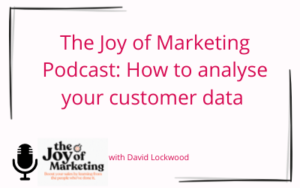As any multi-channel retailer will know, customer acquisition is not about recruiting any customer at any cost. Long-term profitability comes from recruits that have the potential to become loyal high-value customers. At a recent Retail Leaders Forum, several multi-channel retail brand leaders joined us to explore the raft of acquisition channels available today – and how to measure the marketing cost of each new recruit.
A multitude of channels to choose
With so many channels available, it can be tricky to know which are the most effective in terms of acquisition for each brand. Today, marketers can take advantage of PPC (including dynamic shopping and paid/or earned social), TV, direct mail (including cold mail), press, display, outdoor (including digital out-of-home), door drop, inserts, affiliates, PR, influencers, SEO, video, partnerships, sponsorship, product dispatch and many more.
An experienced growth partner can advise on current performance trends across each channel – especially during the pandemic – to help evaluate the best combination of channels for acquisition. Once you’ve chosen which channels to test, the next step (before considering any other factors such as attribution), is to put a firm number on your acquisition costs.
How to calculate your CPA
As David Lockwood explained in our session, the calculations are the easy part. The most important thing to take into account, before you even start to make calculations, is what exactly constitutes your CPA (Cost per Acquisition) or “marketing cost per recruit”. Otherwise, you’ll have different teams across your business taking away completely different interpretations of the numbers.
It’s important to factor in that different channels have different margins, average order values, items per order, or average selling prices. Then you need to consider what actually goes into your marketing cost. Are you simply looking at your media costs, or are you including your creative costs as well? Are there any other variable marketing costs that need to be included, to allow you to properly understand how much it has cost to get your marketing out there?
Taking this one step further, you can also work out a broader ‘contribution to overheads’ cost. So apart from marketing costs, try to factor in aspects such as fulfilment cost per order. In summary, make sure that your acquisition cost gives you the most accurate reflection of a customer’s value, or profitability, to your business.
The importance of “future value”
Rather than focusing on your lifetime customer value, which is an ethereal concept of what a customer might be worth to you for as long as your brand exists, try to focus on your customers’ future value at any given time; for instance, six months or a year down the line. Then, according to your business objectives, you can determine whether you wish to recruit customers at a profit within this window, at breakeven, or perhaps even at a loss in order to drive volume. These decisions will provide the framework for calculating how much you can afford to spend on a new customer e.g. if the value of a customer after six months is £25 and you are happy to recruit them at breakeven, your maximum CPA would be £25.
Recognising that different customer groups have a different future value is really important because, of course, channel performance can change quickly in retail. For example, let’s say your Google Shopping recruits have a future value of £20 and a CPA of £10, while your cold mail recruits have a CPA of £25 with a future value of £50. By looking at your marketing cost per acquisition in isolation, it might be tempting to increase your marketing spend in the cheapest channels, while completely halting spend on channels which could actually generate more revenue in the longer term. Therefore, you should look at your costs per recruit in the context of the future value of those customers when making your marketing investment decisions.
By working with an experienced marketing partner, who can help you take a regular deep-dive into your customer insight over time, you can begin to predict, fairly accurately, what your customers are likely to spend in the future. You’ll also get a feel for those customers who are simply hunting for the best deal at the time, and those who are most likely to bring the most long-term value.
If you would like to watch David Lockwood, Tapestry Co-Founder and Insight Director explaining this in person, he talks through it in this video: How to measure customer acquisition performance
In our next post, we share some insight from the retail leaders on Effective acquisition channels for multi-channel retailers




